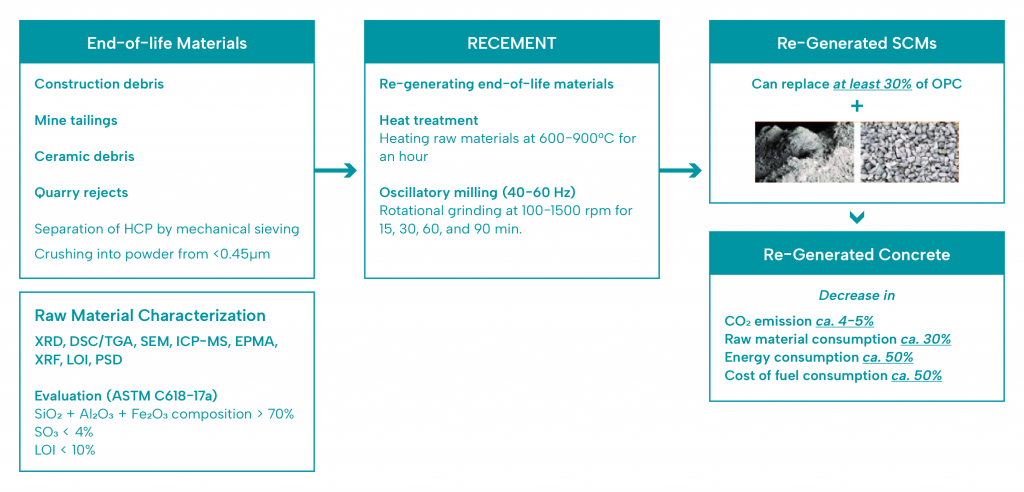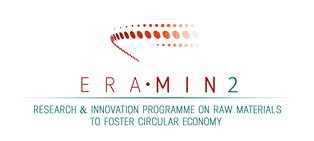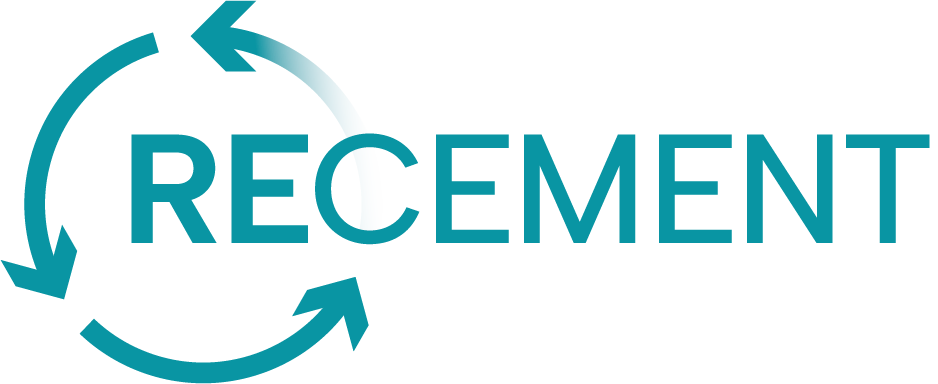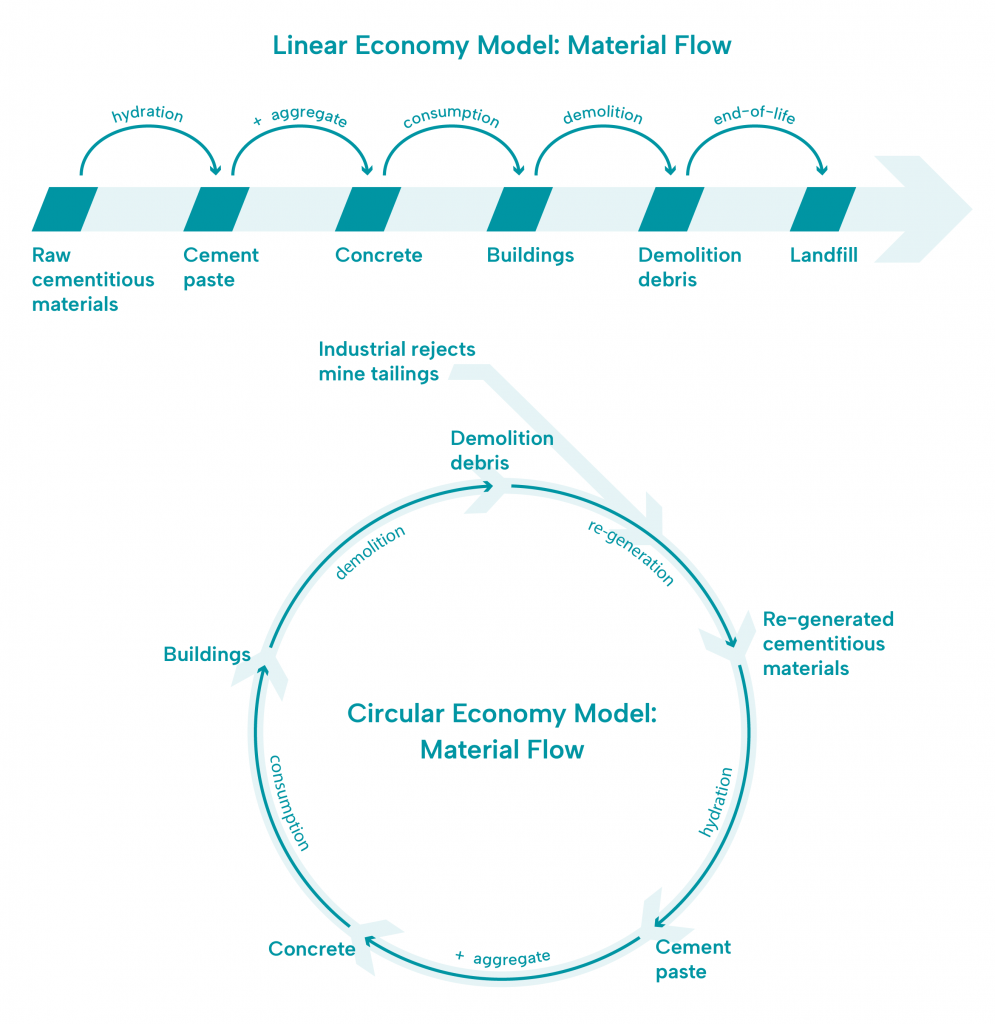
From landfill to raw material for the construction industry, the reactivation of end-of-life (EOL) materials for re-generation into supplementary cementitious materials (SCM) for cement is a game-changing innovation in RECEMENT, one which transforms the linear construction economy into a large volume, high impact circular economy. Although concrete may appear to be a deceptively simple aggregation of rocks held together by a glue-like, cement binder, understanding the complex reactions that occur upon cement (de)hydration is the key to re-generating demolition and industrial reject material as resources for concrete production. This binding agent forms when silicate- and calcium-containing SCMs react with water upon contact. Conveniently, much of the reject material generated by the mining industry, the construction industry, and by the ceramic whiteware manufacturing industry contains extremely high percentages of potential SCM and are broadly available. By re-purposing these EOL products, we can lessen the dependence of cement/concrete production on pristine raw materials and energy- and carbon-expensive processes, while simultaneously reducing the matter that would otherwise contribute to landfill. The technological innovation objective of RECEMENT is to develop the know-how for producing cement and concrete from remanufactured materials containing a high amount of re-generated SCMs—the raw minerals of mining tailings, the concrete debris from construction and demolition, and the failed products from ceramic whiteware production. Our research and innovation methodology are constructed around mapping and collecting these reject materials, characterizing and determining the necessary conditions for their decomposition into the reactive silicate and calcia based SCM components, and their reaction upon hydration, i.e., their “pozzolanic reactions”, to form the high-quality composite cement required for concrete. The team assembled for this interdisciplinary project has the broad range of expertise for realizing the objective of RECEMENT: cement/concrete engineering, geology, materials characterization. The output of RECEMENT is the know-how for re-generating construction and mining debris into SCM and a proposed business model for concrete production based on this RECEMENT. The mining of end-of-life material from urban construction “quarries” and mineral deposits will support a new circular concrete economy.
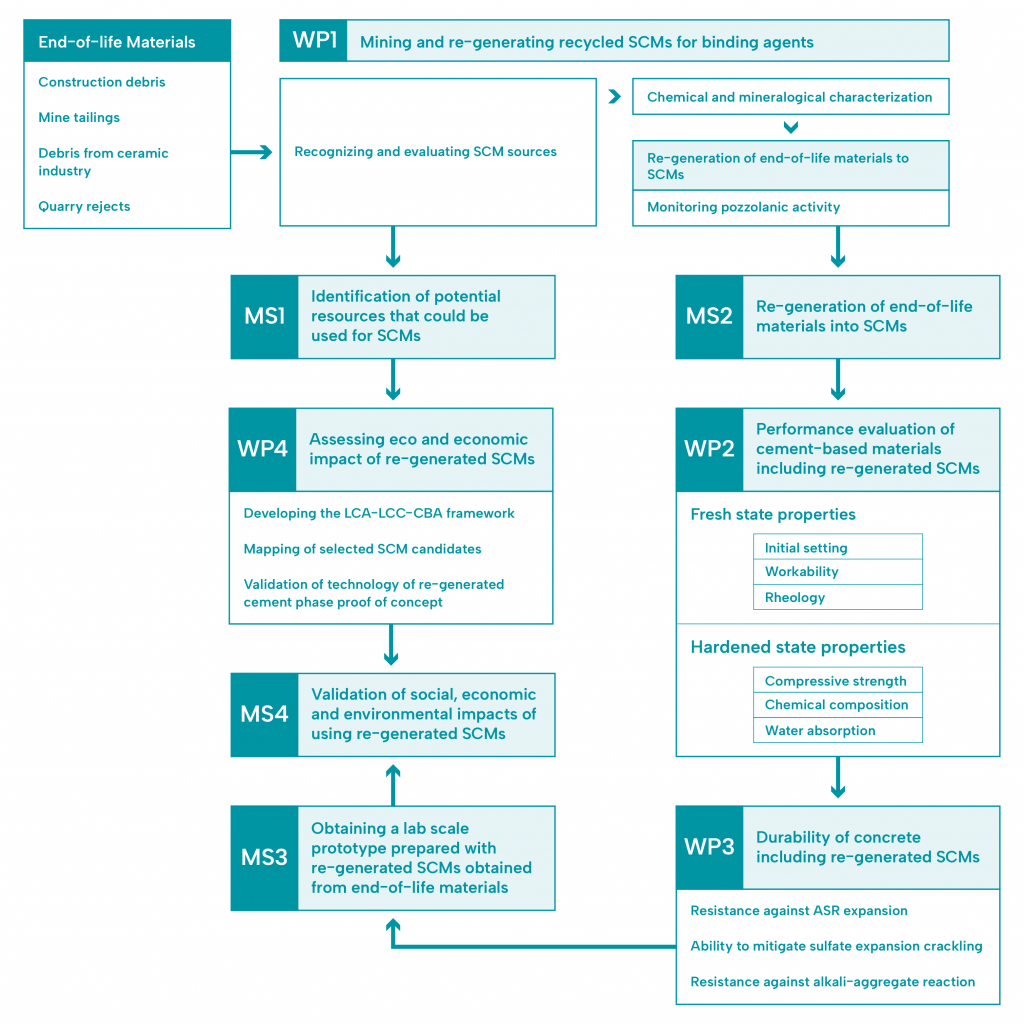
A comprehensive techno-economic analysis will be performed to evaluate the impact of RECEMENT innovations along the entire value chain. Although this analysis and the implementation will be focused on engaging with the sources and potential industrial partners in the countries of the three RECEMENT consortium partners—Turkey, Slovenia, and Romania, the complete process for exploiting sources local to each region as re-generated SCM components and their incorporation as a cement paste into construction-quality concrete is foreseen to be more broadly applicable in Europe. While the impact is anticipated to be strongest financially on the cement industry, it would be even stronger and distributed more widely across Europe in terms of the environmental management, land-use, and energy consumption contexts.
